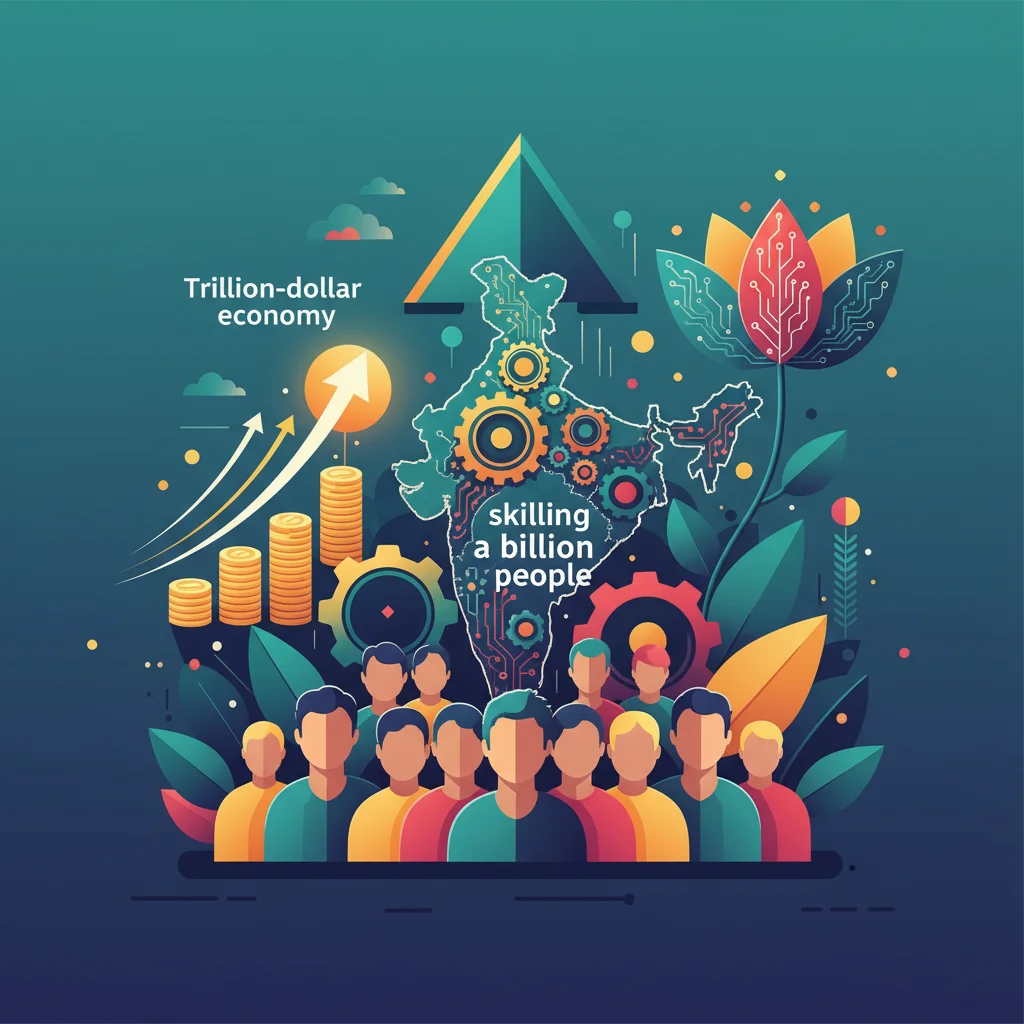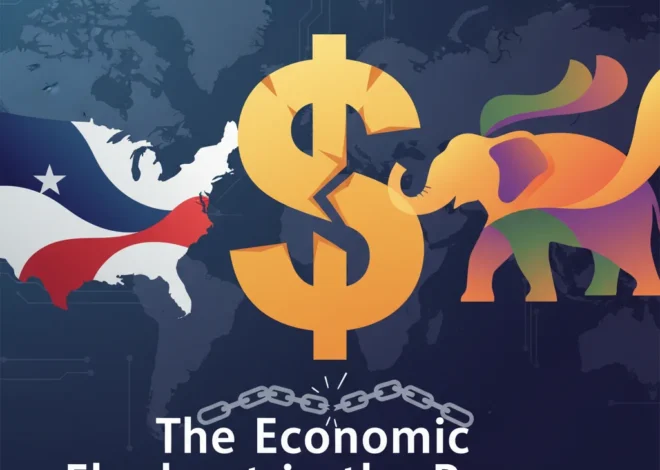
India’s Trillion-Dollar Challenge: Can Skilling a Billion People Unleash its Economic Superpower Potential?
The Demographic Dividend or a Ticking Time Bomb?
India stands at a pivotal moment in its economic history. With the world’s largest population and a median age of just 28, the country possesses a demographic dividend that is the envy of aging nations. This vast, youthful workforce represents a reservoir of potential energy, capable of powering India to become a global manufacturing and services hub. However, this potential comes with a monumental challenge: a staggering skills gap. The very asset that could propel India’s economy forward could become its greatest liability if left unaddressed.
The Indian government, recognizing this make-or-break reality, has launched an ambitious, multi-billion-dollar effort to upskill and reskill hundreds of millions of its citizens. This is not merely a social welfare program; it is a calculated, strategic move in the high-stakes game of global economics, aimed squarely at competing with China and attracting a significant share of the world’s manufacturing and investment. For global investors, finance professionals, and business leaders, understanding the nuances of this colossal undertaking is crucial for navigating the future of the world’s fastest-growing major economy.
The Scale of the Ambition: A Nation Goes to School
The numbers behind India’s skilling challenge are difficult to comprehend. The country’s workforce is projected to exceed 1 billion people in the coming decade. Yet, a significant portion of this workforce operates in the informal sector with limited or no formal training. To bridge this chasm, New Delhi has intensified its efforts under the “Skill India Mission,” a comprehensive initiative designed to train over 400 million people in various skills by the end of this year.
The primary vehicle for this mission is the National Skill Development Corporation (NSDC), which facilitates private sector-led training programs. The government is pouring resources into creating a robust ecosystem of vocational training institutes, online learning platforms, and industry-specific skill councils. The goal is to create a standardized, high-quality training infrastructure that can cater to the diverse needs of a modern economy—from high-tech manufacturing and coding to essential trades like plumbing and electrical work.
To grasp the context, it’s useful to compare the demographic landscapes of the two Asian giants vying for economic dominance.
| Key Demographic & Workforce Metric | India | China |
|---|---|---|
| Median Age | ~28 years | ~39 years |
| Annual Workforce Entrants | ~12 million | Negative Growth |
| Formal Vocational Training Penetration (Est.) | Below 5% | ~25-30% |
| Labor Force Participation Rate (Female) | ~25% | ~61% |
This table highlights India’s core advantage—youth—and its most significant weakness: a lack of formal vocational training. Closing this gap is the central objective of the government’s current economic policy.
Solving the Market's Crossword: A Strategic Guide to Today's Financial Puzzles
The Investment Thesis: Why Skilling India Matters for Your Portfolio
From a purely financial perspective, India’s skilling mission is one of the most significant alpha-generating stories in emerging markets today. Its success or failure will have profound implications across the entire spectrum of finance, from foreign direct investment (FDI) to public stock market performance.
Fueling the ‘Make in India’ Engine
The primary beneficiary of a skilled workforce will be the manufacturing sector. Global giants like Apple, Samsung, and Foxconn are already scaling up their Indian operations. A readily available pool of trained labor in areas like electronics assembly, precision engineering, and quality control is a prerequisite for this expansion. Success here will directly boost the Indian economy, increase exports, and stabilize the currency. For investors, this translates into opportunities in the manufacturing, logistics, and industrial real estate sectors. The performance of these sectors on the Indian stock market is increasingly tied to the success of these skilling initiatives.
De-risking Foreign Direct Investment
For decades, one of the biggest operational risks for foreign companies in India has been the inconsistency in labor quality. A national, standardized skilling framework reduces this risk significantly. It provides a level of assurance that the workforce possesses the necessary competencies, making large-scale capital investment more attractive. This is a fundamental principle of investing: reducing risk enhances potential returns.
The Fintech and Financial Technology Revolution
The skilling boom is also a massive catalyst for India’s world-leading fintech sector. The entire ecosystem is being built on a digital backbone. Consider the following:
- Digital Credentials: There is a growing conversation around using blockchain technology to create secure, verifiable digital certificates for skilled workers. This would eliminate fraud and create a trusted, transparent ledger of an individual’s qualifications, revolutionizing the hiring process.
- Access to Credit: As millions of workers transition from the informal to the formal economy, they become part of the formal banking system. Fintech lenders are leveraging this data to provide small loans for tools, further education, or personal needs, driving financial inclusion.
- Ed-Tech Synergy: A significant portion of this skilling is delivered through financial technology-enabled educational platforms. This creates a burgeoning Ed-Tech market, which has become a hotbed for venture capital investment.
Beyond the Boarding Pass: Ryanair's Digital Gambit and Its Ripple Effect on Finance and Investing
Priority Sectors: Building the Future Workforce
The government’s strategy is not a blanket approach but a targeted one, focusing on sectors with the highest potential for growth and job creation. This strategic alignment is critical for ensuring that training is directly linked to industry demand.
| Priority Sector | Strategic Importance | Key Skills in Demand |
|---|---|---|
| Electronics System Design & Manufacturing (ESDM) | Capitalizing on supply chain diversification from China; reducing import dependency. | PCB assembly, semiconductor testing, quality assurance, robotics operation. |
| Automotive & Electric Vehicles (EVs) | Becoming a global hub for auto components and EV manufacturing. | EV battery management, automotive assembly line operations, CNC machining. |
| IT & Business Process Management | Moving up the value chain from back-office support to higher-value services like AI and data analytics. | Data science, cloud computing, cybersecurity, full-stack development. |
| Renewable Energy | Meeting climate goals and achieving energy independence. | Solar panel installation & maintenance, wind turbine technician skills. |
| Healthcare | Serving a massive domestic population and the growing medical tourism industry. | Nursing assistants, medical lab technicians, healthcare data management. |
Navigating the Headwinds: A Reality Check
Despite the immense potential, the path forward is fraught with challenges. The sheer scale of the operation invites logistical nightmares. Ensuring the quality of training across thousands of centers, both public and private, is a Herculean task. There’s a persistent risk of creating “certificate mills” that hand out credentials without imparting genuine, job-ready skills—a problem that plagued earlier initiatives (source).
Furthermore, the rapid pace of technological change, particularly AI and automation, means that the curriculum must be dynamic and forward-looking. Training someone for a job that will be automated in five years is a waste of resources. Constant dialogue and collaboration between industry and training institutes are non-negotiable for success. Finally, deep-seated social challenges, such as increasing female labor force participation and reaching remote rural populations, remain significant hurdles that policy alone cannot solve.
The Driving Test Backlog: A Surprising Lesson in Economic Efficiency and Financial Systems
The Final Verdict: A Bet on India’s Future
India’s massive workforce skilling initiative is more than just an education policy; it is the bedrock of its future economics. It is a high-stakes, high-reward national project that aims to convert a demographic challenge into an economic juggernaut. For the global investment community, this is not a story to be watched from the sidelines.
The success of this program will dictate the flow of global capital, the configuration of international supply chains, and the trajectory of the Indian stock market for the next generation. While the risks of execution are real, the potential payoff is transformative. By turning its vast population into a skilled, productive workforce, India could finally unlock its full potential and solidify its position as a true superpower in the 21st-century global economy. The world of finance is watching, and the smart money is paying very close attention.


